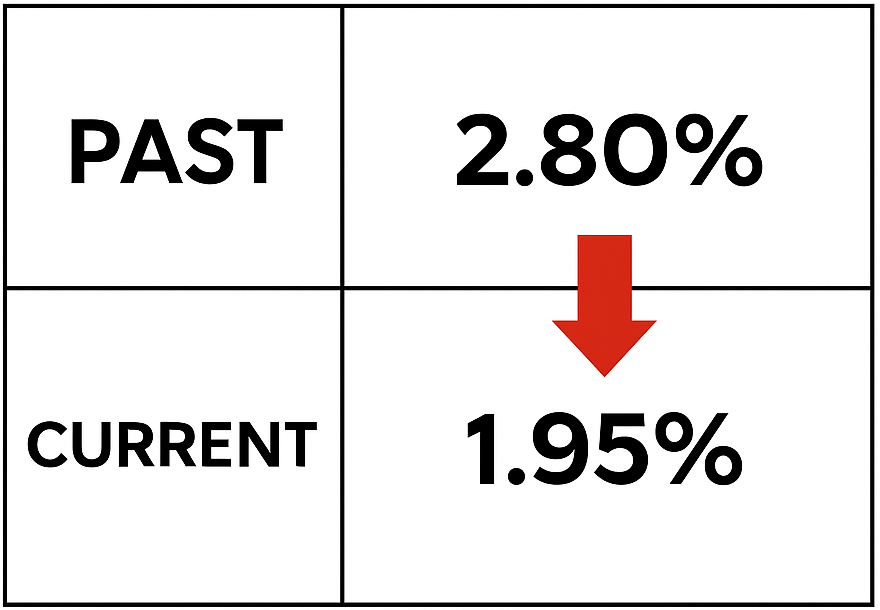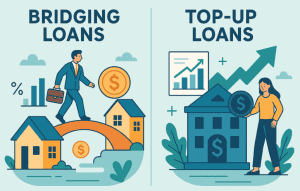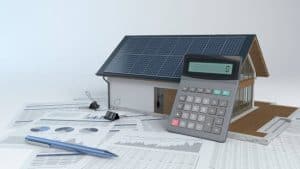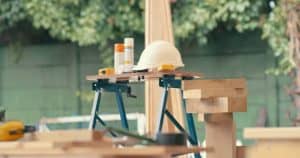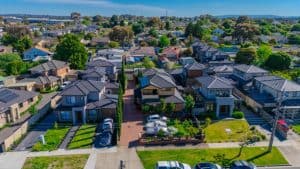Thinking of giving your home a fresh new look, but not sure how to pay for it? With renovation costs in Singapore easily crossing $40,000, it’s no surprise more homeowners are asking: “Can I refinance my home loan to cover renovation expenses?”
The short answer? Yes, it’s possible—if you meet certain criteria. And in many cases, it could even be cheaper than taking a renovation loan.
In this guide, we’ll show you how refinancing your home loan can help fund your renovation plans, what banks look for, and whether it’s the right move for your situation.
What Is Renovation Refinancing and How Does It Work?
Renovating a home in Singapore isn’t cheap—and if you’ve already got a mortgage, you might be wondering if there’s a smarter way to fund those upgrades.
Here’s the good news: you can refinance your home loan to pay for renovations, either by cashing out some of your property’s value or by adjusting your loan to free up monthly cash.
It’s not for everyone, and banks will look at a few key factors first. But when it works, this method can help you avoid taking up high-interest renovation loans or personal financing.
Let’s look at how it actually works.
What is cash-out refinancing in Singapore?
Cash-out refinancing is when you replace your current mortgage with a new, larger one—so you can withdraw part of your home’s equity in cash. The “extra” money can then be used for renovations, home upgrades, or other major expenses.
Example:
If your home is valued at $900,000, and your outstanding mortgage is $500,000, you could refinance and withdraw a portion of the remaining $400,000 equity—depending on your loan-to-value (LTV) limit, income, and Total Debt Servicing Ratio (TDSR).
Cash-Out Refinancing Eligibility Based on Home Equity (2025)
| Property Value | Outstanding Loan | Max Loan (75% LTV) | Potential Cash-Out |
|---|---|---|---|
| $900,000 | $500,000 | $675,000 | $175,000 |
| $1,200,000 | $650,000 | $900,000 | $250,000 |
| $700,000 | $400,000 | $525,000 | $125,000 |
Expert Tip: Not all banks offer cash-out refinancing, and some limit usage to “non-speculative” purposes like renovations. Working with a mortgage broker in Singapore can help you find one that fits your goals.
Can refinancing free up funds even without cash-out?
Yes, it can. Even if you’re not cashing out equity, refinancing to a lower interest rate or switching to a longer loan tenure can reduce your monthly repayments. That extra cash saved each month could then be used to fund your renovation—without increasing your overall loan quantum.
This strategy works best if:
- You’re nearing the end of your lock-in period
- Your current rate is much higher than the best home loan rates in Singapore available now
- You plan to do phased renovation work instead of all at once
💡 Pro Tip: Use a mortgage loan repayment calculator to see how much you could save monthly with a refinance. Sometimes, the savings are enough to offset minor reno costs like carpentry or flooring.
Do you need to show renovation quotations to the bank?
Most of the time, yes—especially for cash-out refinancing. Banks in Singapore will typically ask for:
- Your contractor’s quotation or invoice
- A written purpose for the funds (i.e. “renovation”)
- Proof that you are the legal owner and occupier of the property
This ensures the money is used for genuine, value-adding work, not speculative or investment purposes.
For non-cash-out refinancing, however, no renovation quote is needed if you’re just restructuring your mortgage to ease cash flow.
📌 Insider Note: HDB flat owners can only refinance with banks, not HDB itself. So if you’re planning to do reno works and want to refinance your HDB home loan, make sure you’re switching to a bank first.
Am I Eligible to Refinance for Renovation?
Before you start shortlisting tiles and picking out carpentry finishes, you’ll need to check if you even qualify to refinance your home loan for renovation purposes.
Not everyone can do it. Banks in Singapore look at a few key things—mainly your home equity, your income, and how much you’ve already borrowed. The good news? If your property has appreciated or you’ve paid off a decent chunk of your loan, you could be in a strong position.
Let’s break it down.
How much equity must you have to cash out?
To qualify for cash-out refinancing in Singapore, you need to have sufficient equity in your property. In simple terms, that’s the difference between your home’s current market value and your outstanding loan.
As of 2025, most banks allow you to borrow up to 75% of your property’s value—minus any CPF used and outstanding loan amount.
🔍 For example: If your home is valued at $1 million and you’ve only got $550,000 left on your loan, you could potentially unlock up to $200,000 for renovations (after accounting for LTV buffers and CPF usage).
Tip: Use your bank’s valuation tools or speak with a mortgage broker in Singapore to estimate how much equity you can tap into.
What banks look at in 2025 (LTV, TDSR, income)
In 2025, lenders will assess three main things when you apply to refinance for renovation:
Key Bank Requirements for Refinancing a Home Loan in Singapore
| Key Criteria | What It Means |
|---|---|
| LTV (Loan-to-Value) | You can’t borrow more than 75% of your property’s current value. |
| TDSR (Total Debt Servicing Ratio) | All your monthly debt repayments must not exceed 55% of your income. |
| Stable Income | Banks prefer salaried borrowers or self-employed with consistent income. |
Banks will also check your credit score, existing liabilities (like car loans), and CPF usage.
Note: Refinancing is easier if you’re nearing the end of your lock-in period and your current loan is with a private bank—not HDB.
Can HDB and condo owners both do this?
Yes, but with a few differences.
- HDB flat owners must already be on a bank loan (you can’t refinance if you’re still under the HDB loan scheme). Once you’re with a bank, you can explore cash-out refinancing for renovations—though not all banks allow it for HDBs.
- Condo and private property owners generally have more flexibility. Many banks offer private property loan packages that support equity cash-out for reno works, especially if your home has appreciated in value.
👉 If you’re unsure, start by checking your current mortgage details and refinancing options to see what’s possible for your property type.
Pros and Cons of Refinancing for Renovation
Refinancing your mortgage to fund a renovation might sound like a smart move—and it can be. But before you dive in, it’s important to weigh the real pros and cons, especially compared to taking up a typical renovation loan.
Let’s break it down so you can decide if it’s truly the best fit for your situation.
Lower rates and longer repayment vs reno loans
One major advantage of refinancing is that home loan rates in Singapore are often lower than renovation or personal loans. Plus, when you refinance, you can stretch the loan tenure—bringing down your monthly repayments and easing cash flow.
This makes refinancing attractive for homeowners planning larger-scale renovations or needing flexibility.
Refinance vs Reno Loan: Rates & Repayment Compared
| Loan Type | Typical Interest Rate | Max Loan Tenure | Monthly Repayments (Est.) |
|---|---|---|---|
| Refinance Home Loan | ~2.80% – 3.10% | Up to 30 years | Lower (spread out) |
| Renovation Loan | ~3.88% – 4.88% | Up to 5 years | Higher (shorter term) |
Tip: If you’re already considering a home loan refinance in Singapore, adding your renovation costs into the new loan can save you time and upfront interest—as long as you plan to stay in the property long term.
Higher total cost if you stretch your mortgage
While refinancing gives you more breathing room month to month, don’t forget the long-term cost.
When you stretch a $50,000 renovation cost over 20–30 years at mortgage rates—even if they’re low—you’ll likely end up paying much more in interest compared to a short-term renovation loan.
📌 Quick example:
- $50,000 over 25 years at 2.90% → ~$24,000 total interest
- $50,000 over 5 years at 4.50% → ~$5,900 total interest
So while the monthly payments are easier, you’re trading upfront affordability for higher long-term cost. Make sure your renovation goals justify the extended debt.
What fees and approval risks you should expect
Refinancing comes with upfront costs and approval conditions that many homeowners overlook. Here’s what you might encounter when applying:
Common Refinancing Costs in Singapore
| Cost Component | Estimated Range (SGD) | Notes |
|---|---|---|
| Property Valuation Fee | $200 – $500 | Required by most banks |
| Legal & Conveyancing | $1,800 – $2,500 | Often subsidised for new customers |
| Bank Admin/Processing | $0 – $800 | Depends on lender |
| Lock-in Penalty (if any) | Up to 1.5% of loan amount | Applies if within lock-in period |
Beyond fees, banks will also assess:
- Whether your property qualifies for cash-out refinancing
- If your renovation plans align with their policies
- Your income stability, TDSR compliance, and credit score
Some banks may also reject your application if you’re still under a fixed package or if you’re refinancing an HDB loan that’s still with HDB.
Expert tip: Before making a move, talk to a mortgage advisor who can compare refinancing packages and guide you through approval steps without costly missteps.
When Refinancing Makes Sense for Renovation
Refinancing your home loan to fund renovations isn’t something you do on impulse—it only works well in the right scenarios. For some homeowners in Singapore, it’s a perfect fit. For others, not so much.
So how do you know when it’s actually a smart move? Here are three clear signs refinancing might make sense for your renovation plans.
Your home value has appreciated significantly
If your property’s value has gone up since your original purchase—thanks to market trends, location growth, or even just time—you could be sitting on untapped home equity.
That equity is what allows you to do a cash-out refinance, where you borrow more than your outstanding loan and pocket the difference for renovation use.
💬 Example: Bought your condo at $800,000 and now it’s valued at $1 million? You may be able to unlock $100K+ in equity depending on your loan-to-value (LTV) cap.
📌 Pro tip: Check with a bank or mortgage broker in Singapore to get a free valuation before deciding.
You’re already planning to refinance anyway
If you’re already nearing the end of your lock-in period or thinking about switching to a better mortgage rate, it’s the perfect time to consider adding renovation costs into the mix.
This lets you:
- Save on admin/legal fees (since you’re refinancing anyway)
- Take advantage of new bank promotions or cash rebates
- Combine your reno budget into your loan without juggling multiple debts
💡 Why split into two loans (a mortgage + renovation loan) when you can just restructure one?
Your renovation cost exceeds reno loan limits
Most banks cap renovation loans in Singapore at $30,000 to $50,000, depending on your income and the property’s value.
But what if your plans include:
- Major hacking or structural works
- High-end kitchen and bathroom upgrades
- Full resale flat revamp (which can cost $70K+ easily in 2025)
In these cases, renovation loan limits may fall short, making a refinance the more practical way to fund everything—especially if you’re renovating just once and want to do it properly.
Want to check how much you can borrow? Use our mortgage loan repayment calculator to test different refinance amounts and monthly instalments.
When Refinancing May Not Be the Best Option
Refinancing can be a powerful tool—but it’s not always the right move.
In some cases, refinancing your home loan just to pay for renovations might cost you more than it saves. Here are a few situations where you may want to pause and rethink the plan.
Early in your loan (lock-in or subsidies clawback)
If you’re still within the first 2–3 years of your mortgage, you’re probably under a lock-in period. Most banks in Singapore charge a penalty of 1.5% of your outstanding loan if you refinance during this time.
On top of that, if you received legal fee subsidies or cash rebates from your original loan, you may be required to repay them in full if you refinance too soon—this is known as a clawback.
📌 Quick check: Look at your original loan letter or speak with your bank or mortgage consultant before proceeding.
Not enough equity or CPF already maxed out

If you’ve just bought your property, your loan-to-value (LTV) ratio may already be maxed out. This means you might not have enough equity to do a cash-out refinance.
Also, if a large portion of your loan is already paid with CPF, banks may be more conservative with how much you can borrow—especially if you’re close to retirement age or not actively topping up your CPF OA.
💡 In such cases, a small renovation loan might be a better fit than refinancing your entire mortgage.
You plan to sell or move in 1–2 years
If you know you’ll be upgrading, downgrading, or relocating soon, refinancing to fund renovations may not make financial sense.
Why?
- You might not recoup the renovation cost in the selling price
- The new mortgage terms (like longer tenure) may penalise early repayment
- Any upfront fees won’t get “spread out” over enough time to be worth it
👉 Rule of thumb: If you’re not staying in the home for at least 3–5 more years, refinancing for renovation is rarely worth it.
Final Thoughts: Should You Refinance for Your Renovation?
If you’ve got big renovation dreams but don’t want to rack up high-interest debt, refinancing your home loan in Singapore can be a smart way to fund it — but only if the numbers make sense.
Here’s the bottom line:
- ✅ It works best if your home value has appreciated, or you’re already planning to refinance anyway.
- 🚫 It’s not ideal if you’re still in your lock-in period, have insufficient equity, or plan to move in the next year or two.
- 💡 Refinancing may offer better rates and longer tenures than renovation loans, but you’ll need to factor in fees and the true cost of stretching out repayment.
Not sure where to start? Speak to a trusted mortgage broker in Singapore who can help you compare the best refinance options — and tell you upfront if it’s even worth doing for your renovation goals.
Because sometimes, the best renovation starts with smart financial planning. 😉


